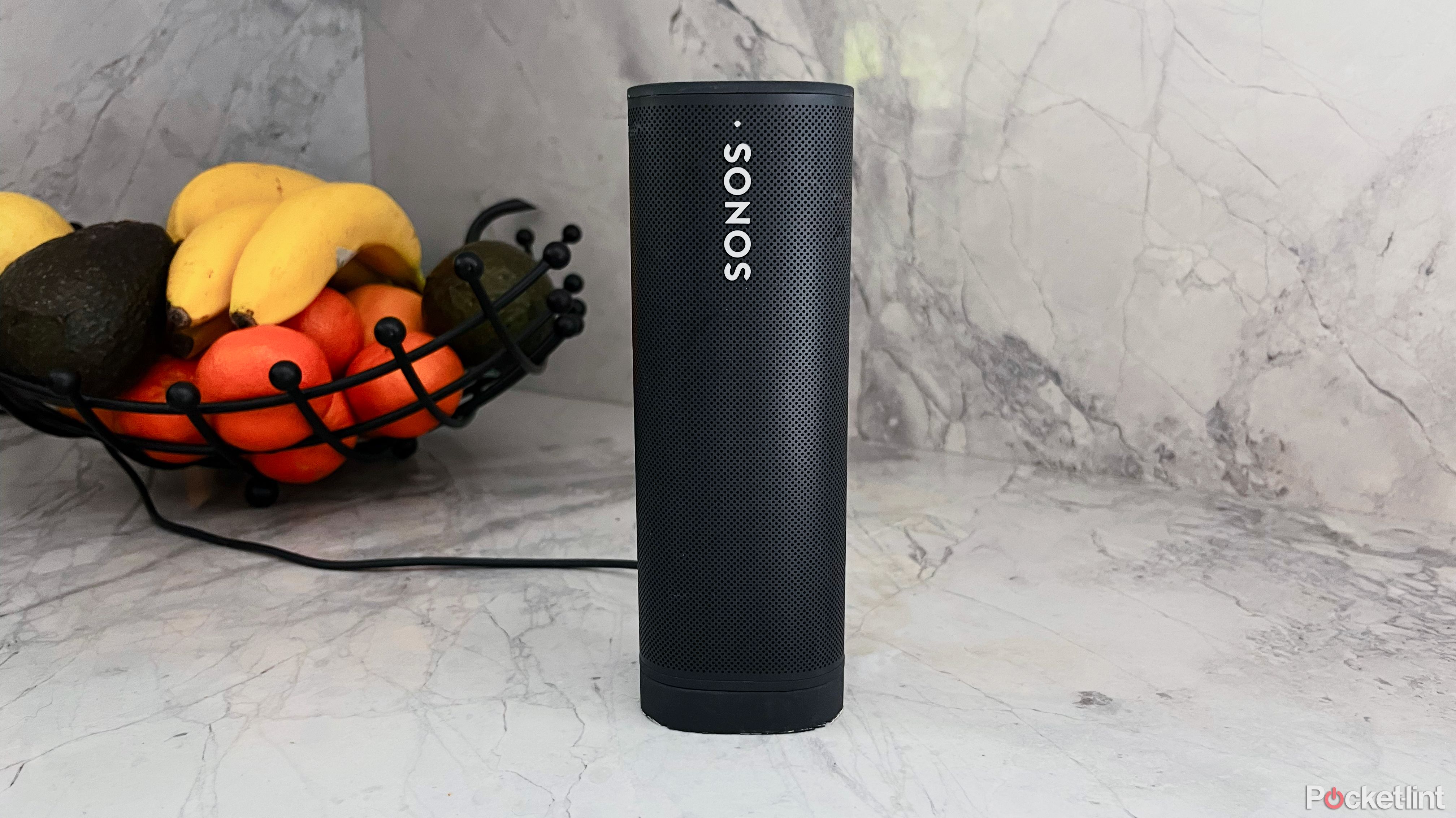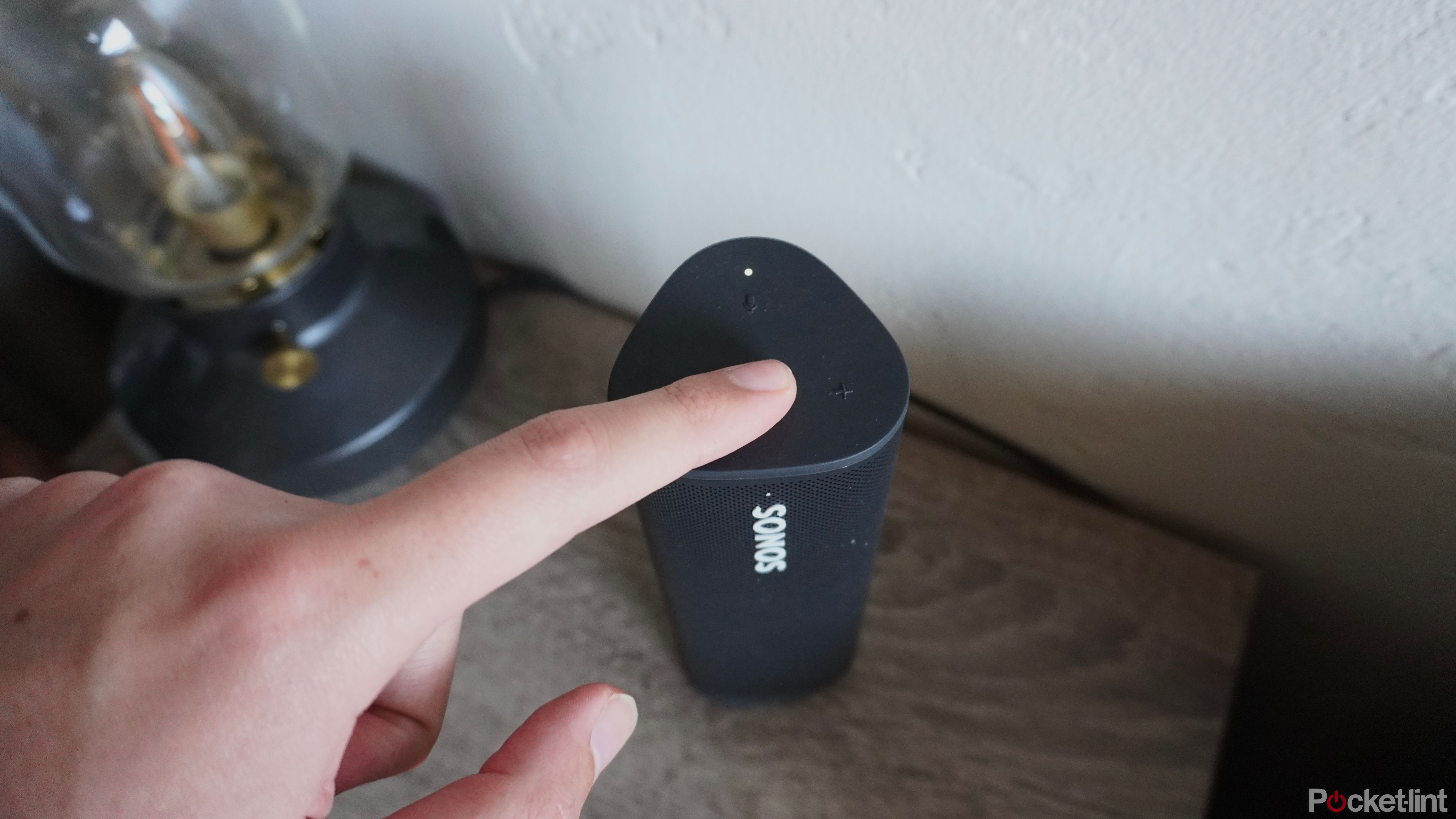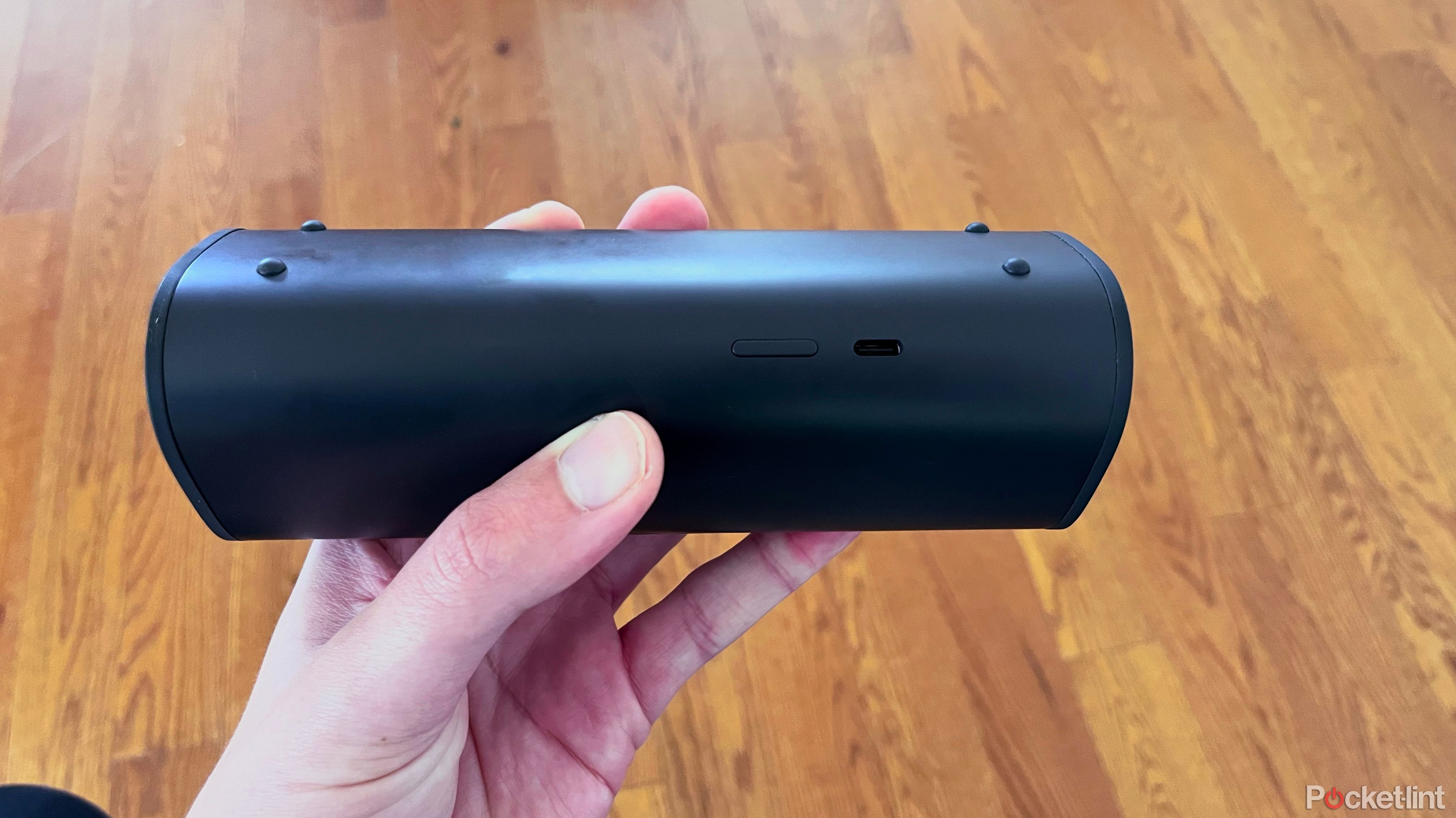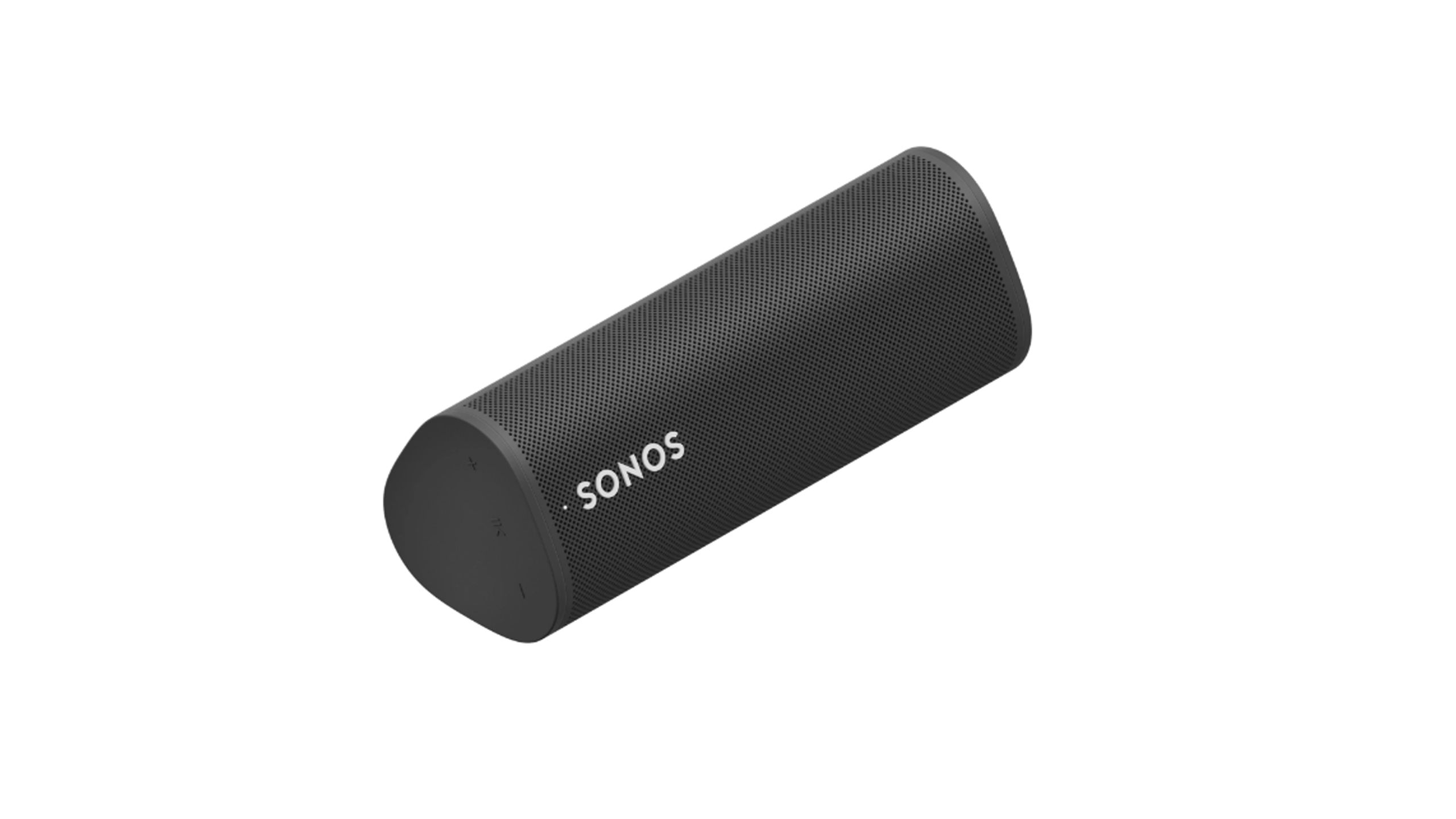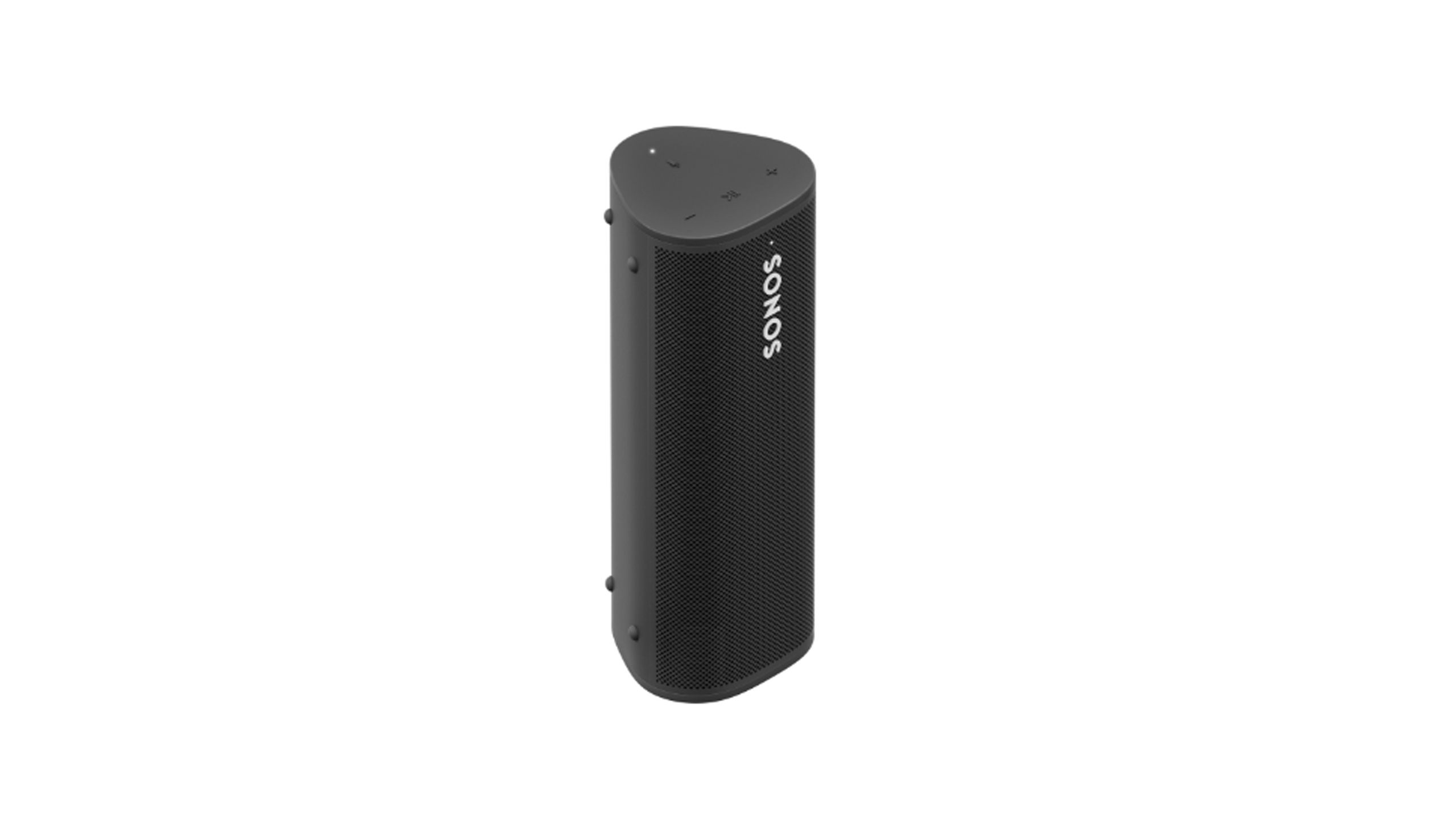-
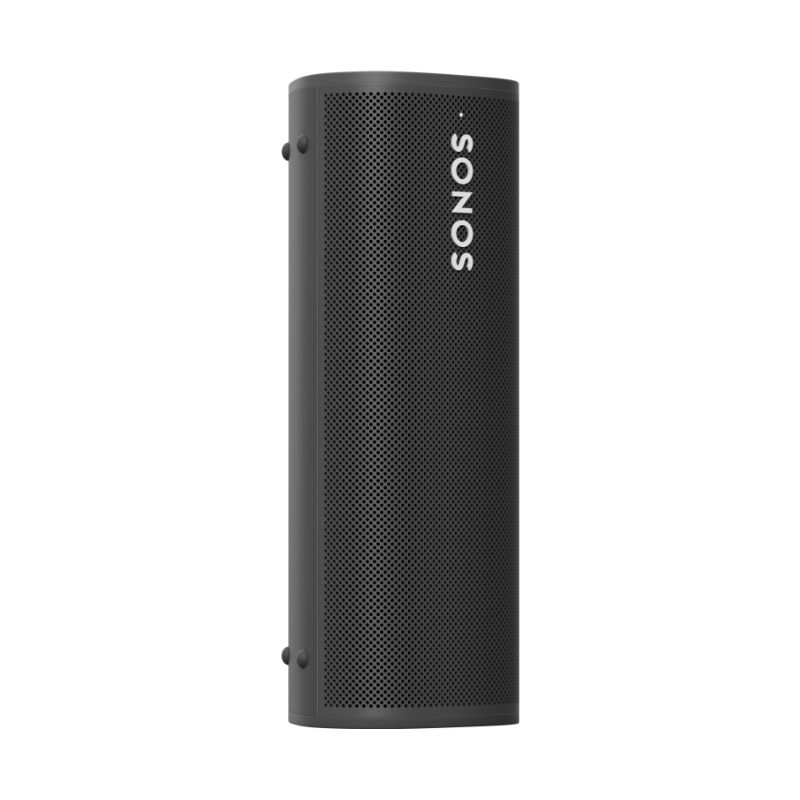
Sonos Roam SL
Our top choiceThe Sonos Roam SL has the same design and sound architecture as the Sonos Roam, but it doesn't offer a microphone and so misses out on a couple of features.
Pros- Lightweight and portable
- Great sound quality
- Water-resistant
Cons- No smart assistants
- No Sound Swap
- No Automatic Trueplay tuning
-
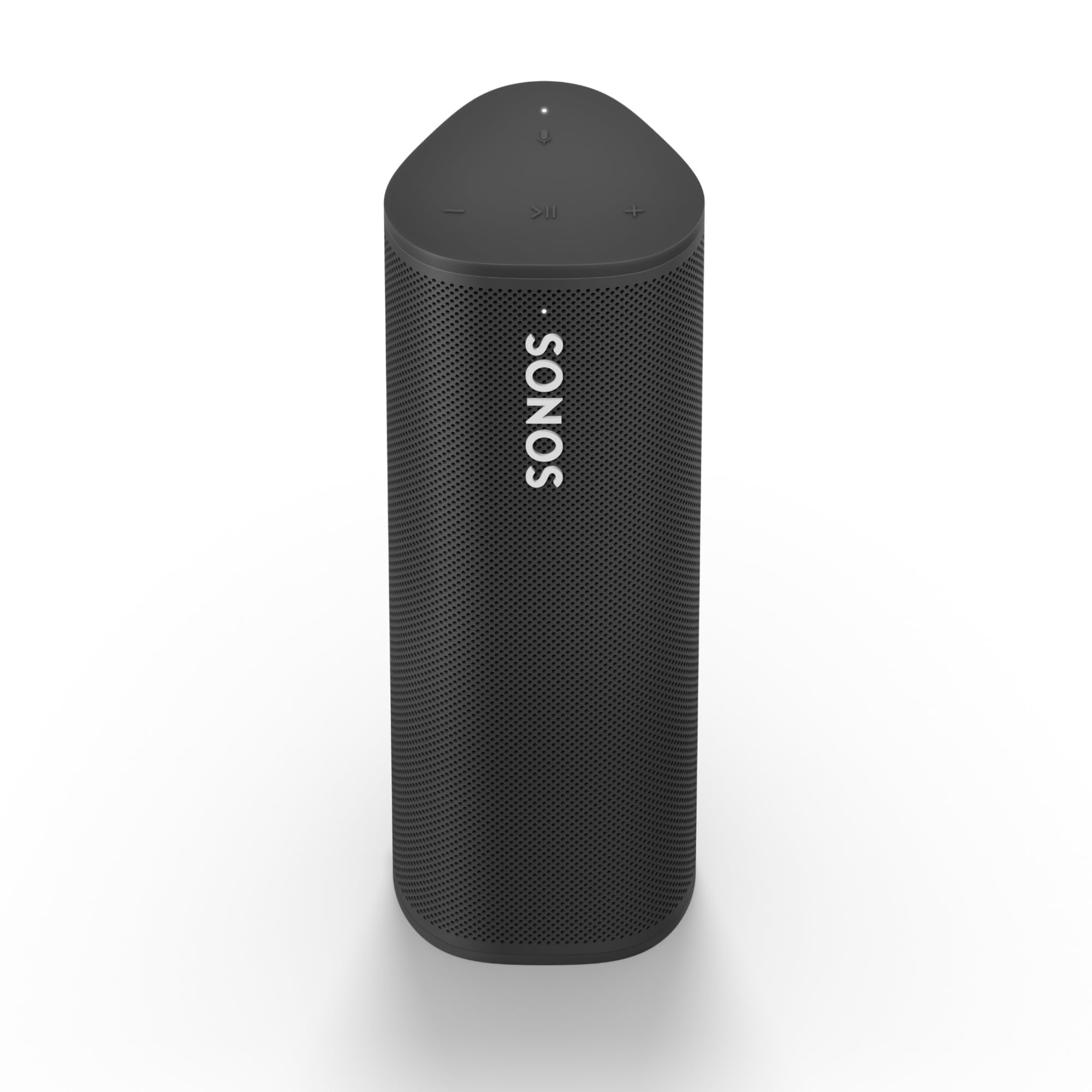
Sonos Roam
A smart alternativeThe Sonos Roam is a fantastic portable speaker with plenty of features, including smart assistants. It has more features than Roam SL, like Sound Swap, but costs more.
Pros- Lightweight and portable
- Water-resistant
- Smart assistants and features
Cons- A little pricey
- No case
- Rubber ends dent
Sonos might be preparing to launch a pair of wireless headphones in 2024, but the company wasn’t always known for portable audio. In fact, the last few years have really shown how the company’s interests have expanded, from the introduction of the Sonos Move, to the Roam, to the Move 2 in 2023. And while the company is best known for wirelessly sending music around your home with Wi-Fi, even new speakers like the Sonos Era 100 and Era 300 ship with Bluetooth compatibility now.
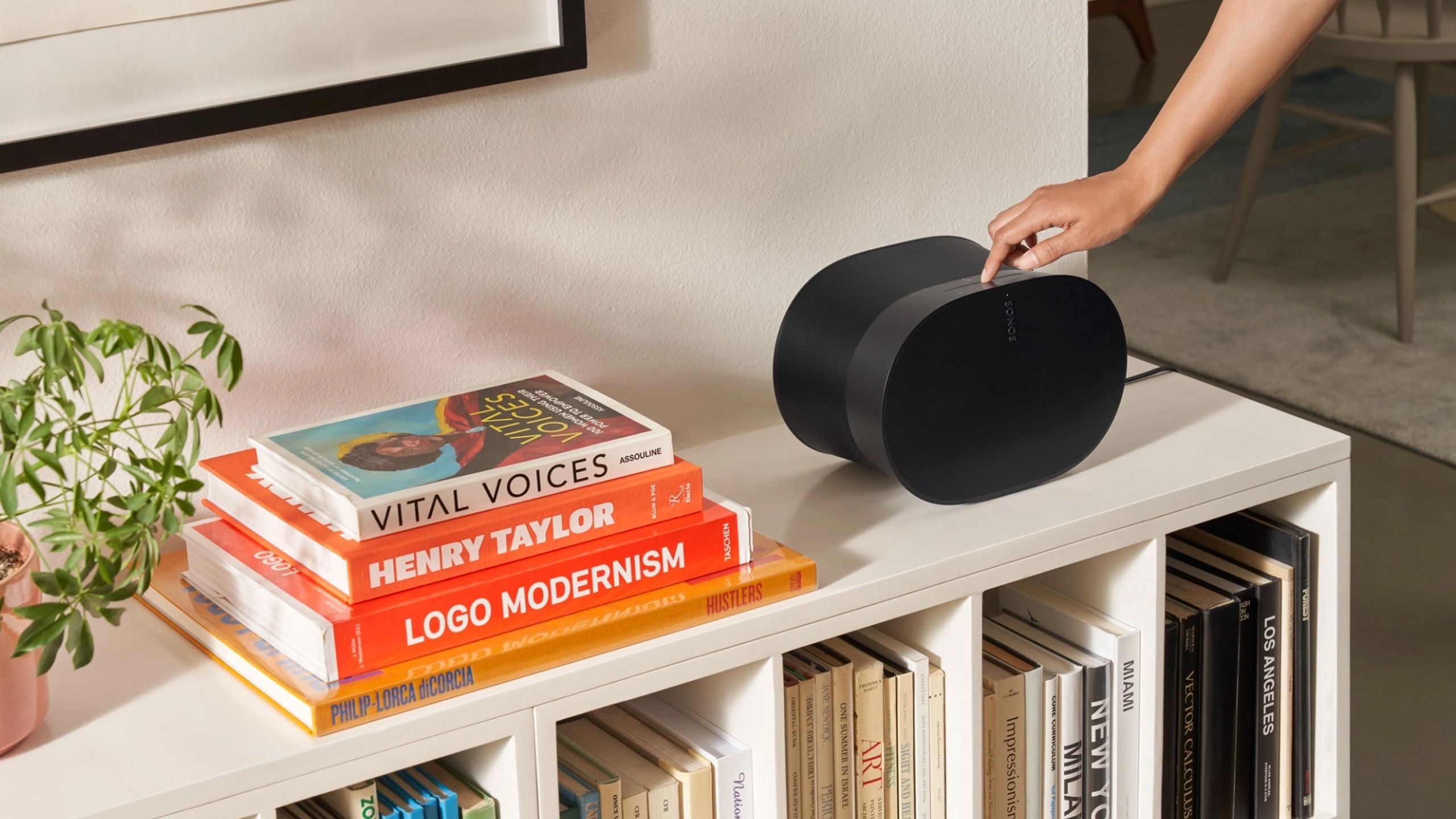
9 ways to get the most from your Sonos speaker
If you know what to do, you can make your Sonos speaker work and sound even better.You can check out Pocket-lint's comparison of the Era 100 to the Roam for a better sense of what you might be missing by choosing an ultraportable speaker, but for now, we're focusing on how the Sonos Roam differs from the microphone-free Sonos Roam SL. Both speakers look the same, but some omissions from the Roam SL mean that what they're actually capable of can look pretty different.
Price, specs, and availability
In terms of price, removing the microphones and accompanying microphone-enabled features does let the Sonos Roam SL be priced cheaper than the Sonos Roam. The original Roam typically starts at $179, while the Roam SL comes in at $159.
Even if the speakers appear identical, removing components from the Roam SL has a cascading effect on the design of the device and its features beyond playing music wirelessly.
What you might miss opting for the cheaper option is a whole host of colors. The Sonos Roam is available in Lunar White, Shadow Black, Sunset, Olive, and Wave. The Sonos Roam SL is just stuck with white and black. White and black don't look bad -- the black model is pretty easily smudged -- but they're not nearly as fun as the bright green or orange of Olive or Sunset.
Color is just an aesthetic consideration, though. Even if the speakers appear identical, removing components from the Roam SL has a cascading effect on the design of the device and its features beyond playing music wirelessly.
-
Sonos Roam SL Sonos Roam Connectivity Wi-Fi 5.0, Bluetooth Wi-Fi 5.0, Bluetooth Battery 10 hours 10 hours Water Resistance IP67 IP67 Audio Two class-H amplifiers, custom racetrack mid-woofer, tweeter Two class-H amplifiers, custom racetrack mid-woofer, tweeter, far-field mics Voice assistant None Google Assistant, Amazon Alexa, Sonos Voice Control Colors Shadow Black, Lunar White Shadow Black, Lunar White, Olive, Sunset, Wave Dimensions 168 x 62 x 60mm, 0.43kg 168 x 62 x 60mm, 0.43kg Buttons Tactile Controls, Power/Bluetooth Button Tactile controls, Power/Bluetooth button Others Sonos features, Airplay 2 Sonos features, Auto Trueplay tuning, AirPlay 2, Sound Swap
Design and style features
Both the Sonos Roam and Sonos Roam SL are about the size of a water bottle (6.61 inches x 2.32 inches x 2.44 inches), with a soft-touch plastic on the outside, a rubbery finish on the top and bottom, and physical buttons for volume, playing and pausing, and on the original Roam, enabling and disabling the onboard microphones. Both speakers charge over USB-C or Sonos' wireless charging stand and have rubber feet on the side, so you can use them easily in a horizontal or vertical orientation.
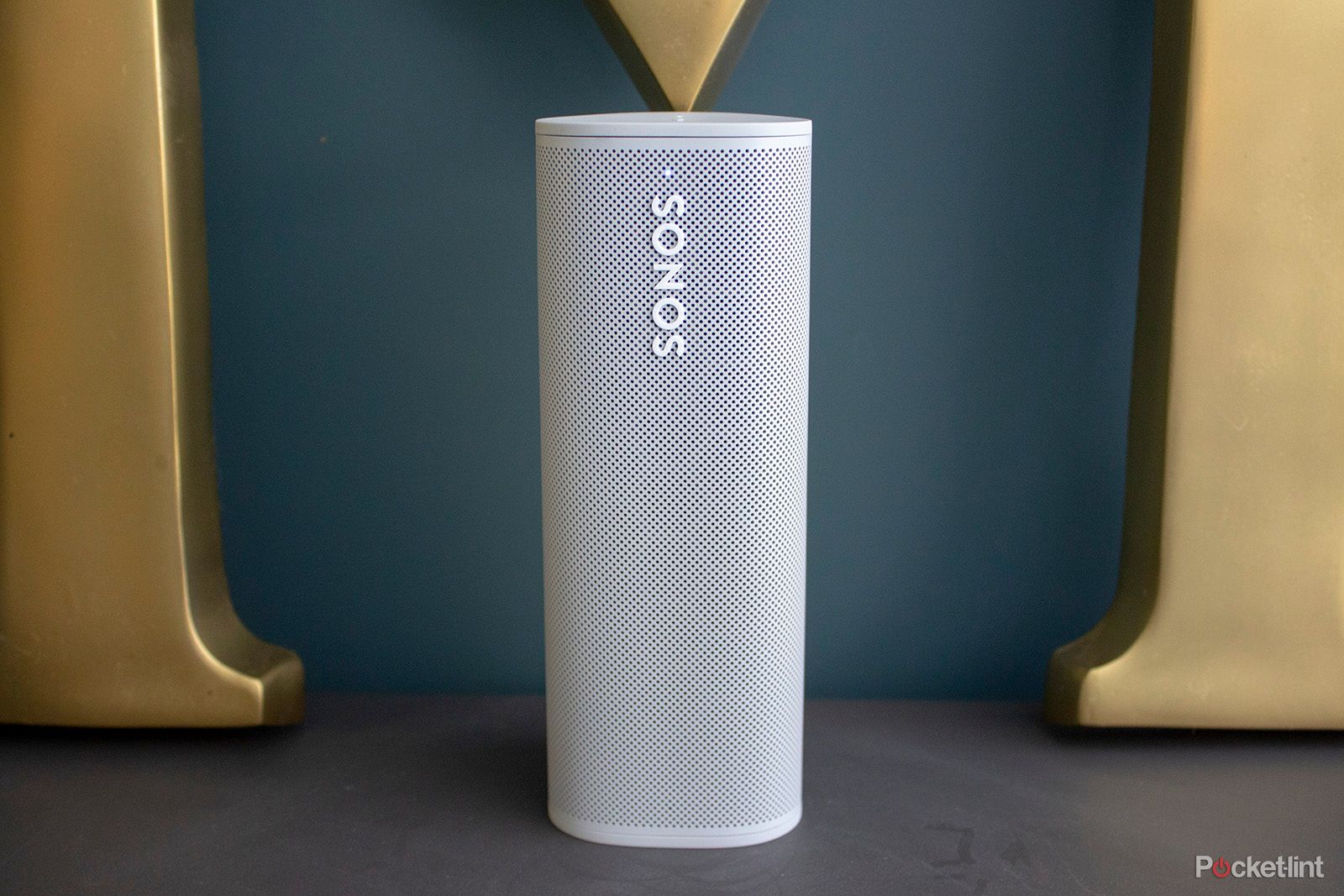
Sonos Roam: Portable perfection
It's pricier than your average Bluetooth speaker, but it isn't your average Bluetooth speaker. Should you buy it? Yes. Why? Let us explain.To turn either speaker requires using the large power button on the side that's also used to enable Bluetooth pairing. Even paying less for the Sonos Roam SL, both speakers are IP67 water and dust resistant which makes them safe to use at the beach or in the shower without worrying about catastrophic damage. Again, these speakers are so similar they fit into the same cases, it's really in the speaker's functions where the differences are more stark.
Sound architecture
The Sonos Roam, whether you buy the vanilla or SL version, continues to sound great years after its introduction. If there's one thing that's remained true, it's that these are small, surprisingly loud, surprisingly clear and crisp speakers. Perhaps that shouldn’t be surprising, because the sound architecture is nearly identical on the inside of the speakers. Both have two Class-H digital amplifiers, one tweeter, and one mid-woofer driving all the sound out of the speakers.
The Roam SL can't use Automatic Trueplay because it doesn’t have onboard microphones, but it uses the older, more manual Trueplay that requires you to wave your phone around to set up.
Where things start to sound different is when you take Trueplay tuning into account. Trueplay is Sonos's software feature that lets you tune your speakers' audio performance for your room. The Sonos Roam has Automatic Trueplay, which does all the work for you. The Roam SL can't use Automatic Trueplay because it doesn’t have onboard microphones, but it uses the older, more manual Trueplay that requires you to wave your phone around to set up. While not a complex process, it does mean if you're not willing to tune things on your own, the Sonos Roam might not sound as good as it could sound.
Features and connectivity support
Besides Trueplay, the Sonos Roam SL's lack of microphones means you'll also lose access to the host of voice assistants the Sonos Roam works with, including Amazon Alexa, Google Assistant, and Sonos' own Voice Control. That's more assistant options than even the new Era 100 has because of the inclusion of Google Assistant. The less varied voice assistant options, however, doesn't mean you can't control the SL via another speaker with microphones in your Sonos system -- the speaker just won't be able to do that on its own.
The Sonos Roam also uses one of our favorite features, Sound Swap. Using onboard microphones, the Sonos Roam can detect ultrasonic frequencies to know where the nearest Sonos speaker is and either transfer music to it or pick up whatever is playing from it. The SL -- lacking microphones, however -- won't promise you the same.
If you can get over the lack of Automatic Trueplay, voice assistants, and Sound Swap, you'll still get the rest of the Sonos system's great features. Both speakers can use Sonos Radio, both can connect to the over 100 music streaming services, both can be placed in speaker groups, or play content over Apple AirPlay 2, or get their EQ adjusted, or be used in a stereo pair, or seamlessly switch from playing music over Wi-Fi to playing it over Bluetooth. And they can do that while still getting around 10 hours of battery life.
Sonos Roam vs Sonos Roam SL: Which should you buy?
The Sonos Roam and Sonos Roam SL are remarkably similar, and if we're honest, the SL speaker is defined by the pieces of the Roam experience that it’s missing. You'll get the same design, battery life, and sound out of both. Microphones, the features they enable, and better color options are the main things you’re missing.
Speaking from experience, I rarely use voice assistants on my Roam, so I don't think they're critical, but if you’re sensitive to sound, losing out on Automatic Trueplay might sting, simply because doing Trueplay the normal way can be slow and most people aren't going to take the time to do it.
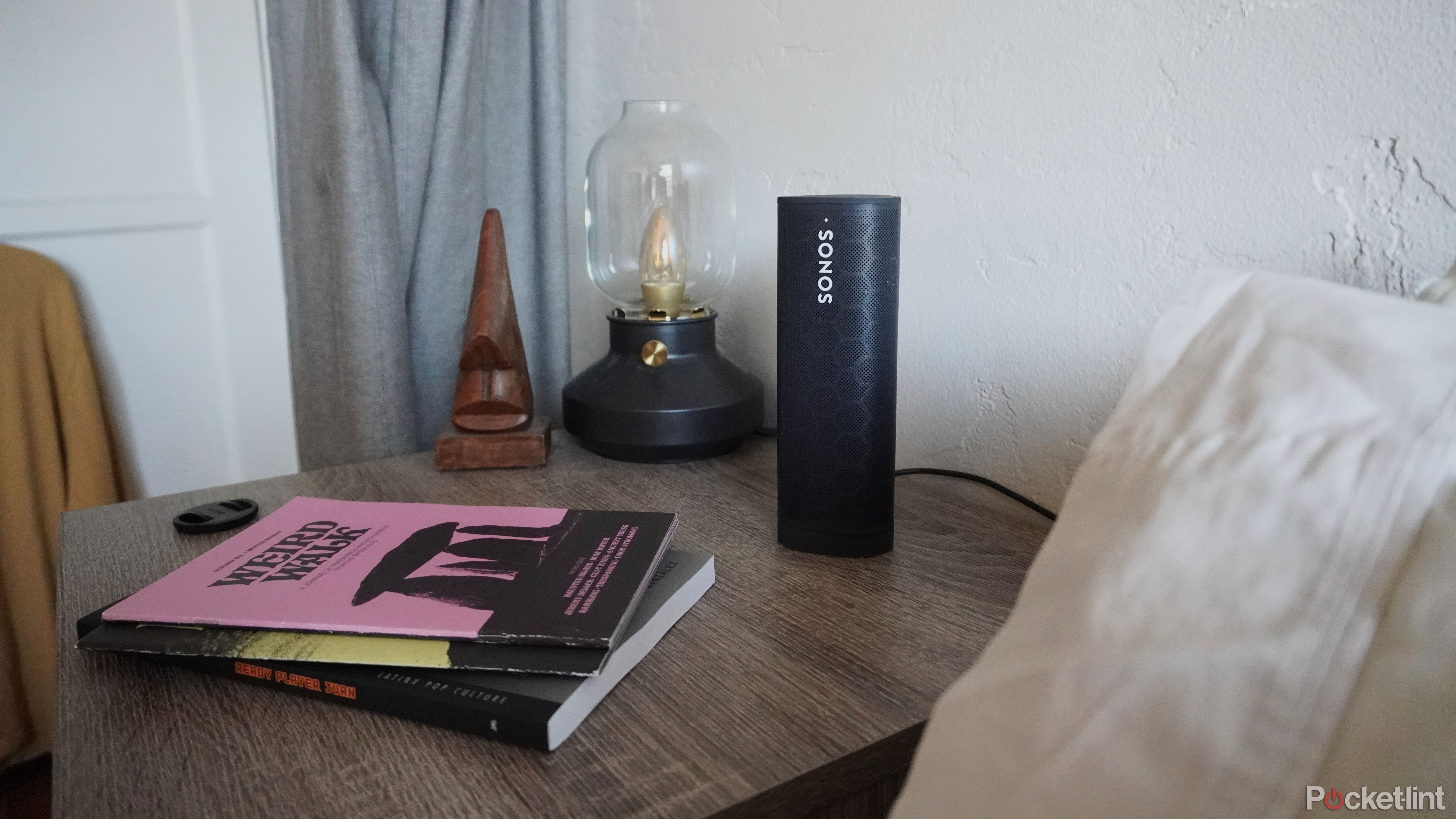
How I turned my Sonos speaker into an alarm clock
Sonos' in-app alarm feature turned my Sonos Roam into a simple, yet satisfying alarm clock that may have just become my nightstand staple.Even still, the features that are available and the sound of the Sonos Roam and Roam SL out-of- box are good enough that the missing features are handy, but by no means necessary. Take the deal on the cheaper Sonos Roam SL, unless the smart features we called out are absolutely necessary for you.

